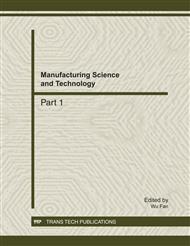p.6741
p.6747
p.6755
p.6762
p.6769
p.6776
p.6784
p.6792
p.6800
Calculation of Grinding Wheel Profile and 3D Simulation for Grinding Screw Rotor Flute
Abstract:
In order to describe the forming grinding principle of screw rotor, the mathematical model of screw rotor’s helical groove and forming grinding wheel are established by differential geometry theory and numerical analysis method. And the contact line equation is derived. To optimize the traditional method of calculating forming grinding wheel by known rotor end section profile, a numerical analysis method (Accumulated Chord Length Parameter Method) has been presented in detail. This method can improve the efficiency and reliability of the calculation of forming grinding wheel axial profile. Taking the asymmetry linear screw rotor (female) as an example, this paper calculates the grinding wheel axial profile and draws it using special designed software. The simulation examples are done by CAD (Computer Aided Design) based on the secondary development technology of UG. This study provides a precise 3D model which can be used in areas such as finite element analysis and virtual testing experiments.
Info:
Periodical:
Pages:
6769-6775
Citation:
Online since:
November 2011
Authors:
Price:
Сopyright:
© 2012 Trans Tech Publications Ltd. All Rights Reserved
Share:
Citation:


